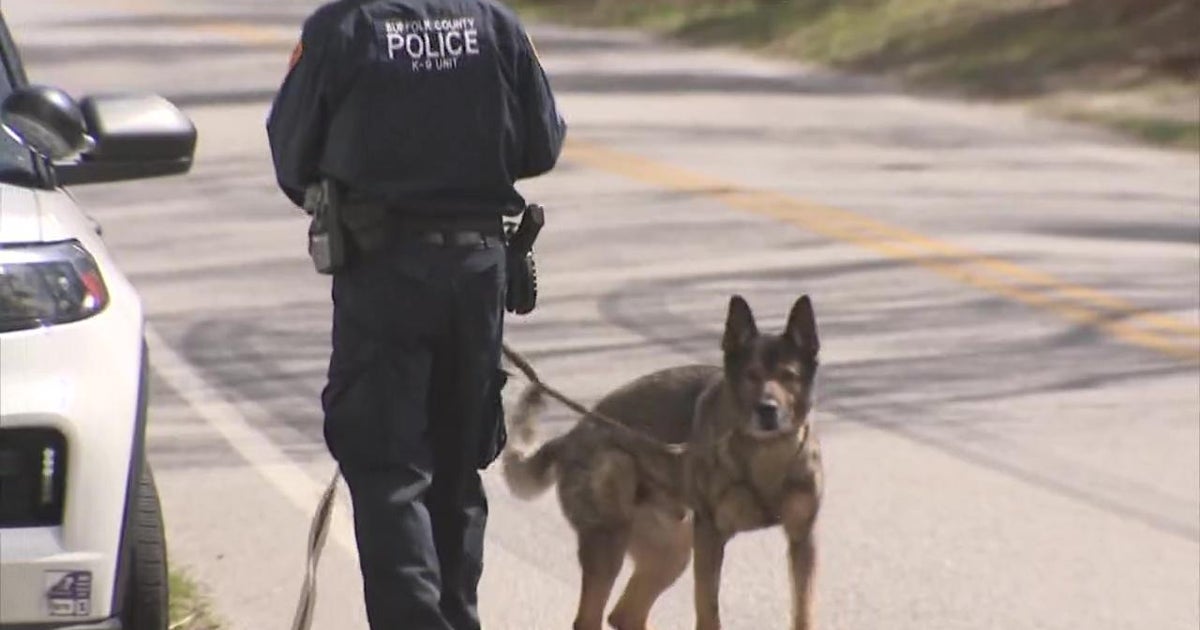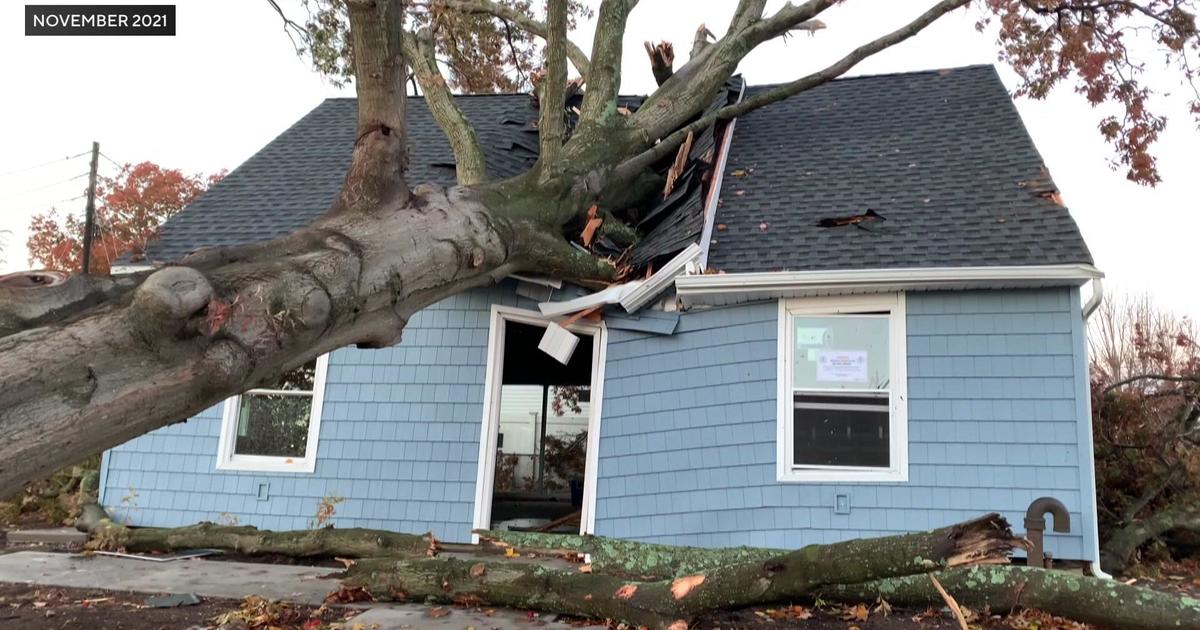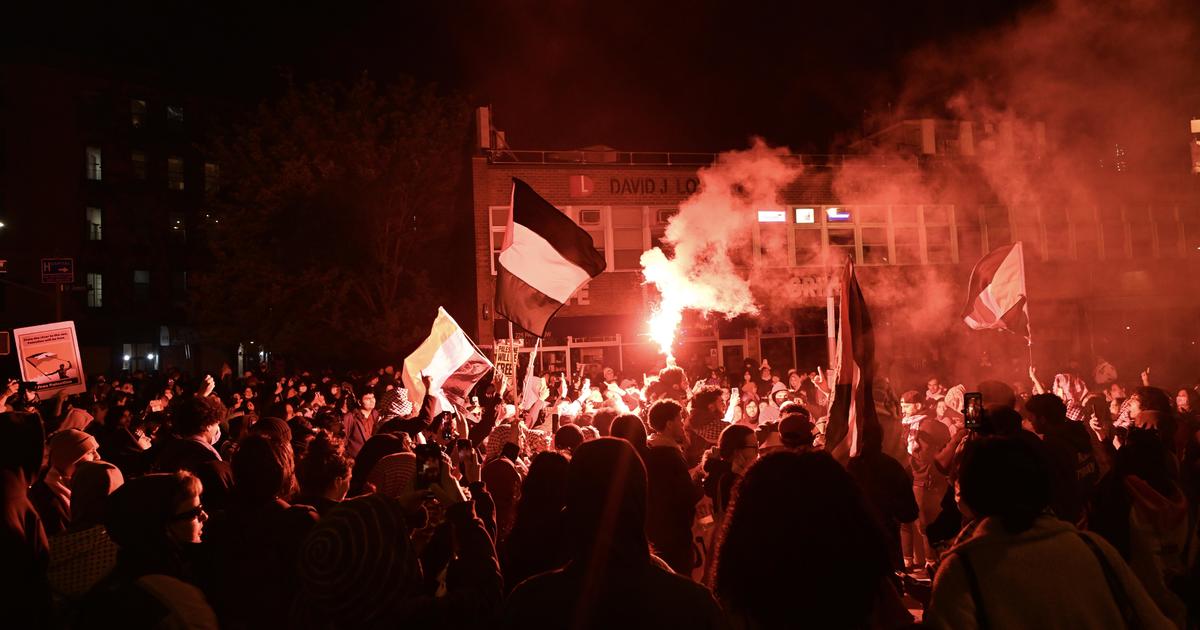Bel Air Blaze Closes Busy Freeway As Firefighters Continue To Battle Southern California Wildfires
VENTURA, Calif. (CBSNewYork/AP) — A dangerous new wildfire erupted in the Bel Air area of Los Angeles early Wednesday as firefighters battled three other destructive blazes across Southern California.
Flames exploded before dawn on the steep slopes of the east side of Sepulveda Pass, which carries heavily traveled Interstate 405 through the Santa Monica Mountains where ridge tops are covered with expensive homes. At least four houses were lost.
The blaze shutdown part of the busy freeway Wednesday, snarling traffic in the pass and beyond.
Hundreds of firefighters battled flames on the ground, as aircraft dropped water and retardant near neighborhoods on the east side of the pass.
"My firefighters have been working since Sunday, so our people are getting tired," Fire Chief Ralph Terrazas said.
The Getty Center art complex, on the west side of the pass, employs extensive fire protection methods. Its website says it was closed to protect its collection from smoke.
A father and son were among those forced to evacuate. They saw their neighbor's home on fire and could only hope for the best.
"Amazing how far this fire has gone and how much damage it's done," the son said. "It's unbelievable."
Elsewhere, use of firefighting aircraft was constrained by the same winds that have spread the fires.
The water-dropping planes and helicopters essential to taming and containing wildfires have been mostly grounded because it's too dangerous to fly them in the strong wind. Tuesday saw gusts of over 50 mph.
Commanders hoped to have them back in the air Wednesday, but all indications were that the winds will be whipping then too, fanning the flames that spurred evacuation orders for nearly 200,000 people, destroyed nearly 200 homes and remained mostly out control.
Clint Garman watched his parents' home burn to the ground.
"Very surreal," he said. "My kids have all grown up there and the grand kids have all spent many years there."
Southern California's so-called Santa Ana winds have long contributed to some of the region's most disastrous wildfires. They blow from the inland toward the Pacific Ocean, speeding up as they squeeze through mountain passes and canyons.
"The greatest threat is and will always continue to be the wind," Terrazas said.
The largest and most destructive of the fires, an 85-square-mile wildfire in Ventura County northwest of Los Angeles, had nearly reached the Pacific on Tuesday night after starting 30 miles inland a day earlier.
The wildfire jumped the major artery U.S. Highway 101 to a rocky beach northwest of Ventura, bringing new evacuations, though officials said the sparse population and lack of vegetation in the area meant it was not overly dangerous, and the highway was not closed.
The fire had destroyed at least 150 structures, but incident commander Todd Derum said he suspects hundreds more homes have already been lost, though firefighters have been unable to assess them.
Lisa Kermode and her children returned to their home Tuesday after evacuating Monday to find their home and world in ashes, including a Christmas tree and the presents they had just bought.
"We got knots in our stomach coming back up here," Kermode said. "We lost everything, everything, all our clothes, anything that was important to us. All our family heirlooms — it's not sort of gone, it's completely gone."
Mansions and modest homes alike were in flames in the city. Dozens of houses in one neighborhood burned to the ground.
Some residents spent the twilight hours Tuesday dousing their roofs with water, hoping that would combat flying embers.
"All of the sudden, I see from the other side, fire came to our side," said resident Adrine Davitan said. "So scary."
John Keasler, 65, and his wife Linda raced out of their apartment building as the flames approached, then stood and watched the fire burn it to the ground.
"It is sad," Keasler said. "We loved this place. We lost everything."
Linda Keasler said they were just glad to be alive despite losing so much.
"Those things we can always get back," she said. "The truth is it is just things and thank god no one died."
Margo Edison left while she could, but not without her animals.
"The winds could change with the Santa Anas very quickly and come west to us because it's done that before and it moves so fast you barely have time to get out," she said.
Some 12,000 structures were under threat.
Animals also had to be moved on short notice. KCBS reporter Kristine Lazar was at a ranch when it was caught off guard by quickly moving flames.
In the foothills of northern Los Angeles, 30 structures burned. Mayor Eric Garcetti said the gusty winds expected to last most of the week had created a dangerous situation and he urged 150,000 people under mandatory evacuation orders to leave their homes before it's too late.
"We have lost structures, we have not lost lives," he said. "Do not wait. Leave your homes."
Fires are not typical in Southern California this time of year but can break out when dry vegetation and too little rain combine with the Santa Ana winds. Hardly any measurable rain has fallen in the region over the past six months.
While the blazes brought echoes of the firestorm in Northern California that killed 44 people two months ago, no deaths and only a handful of injuries had been reported.
(© Copyright 2017 CBS Broadcasting Inc. All Rights Reserved. The Associated Press contributed to this report.)



